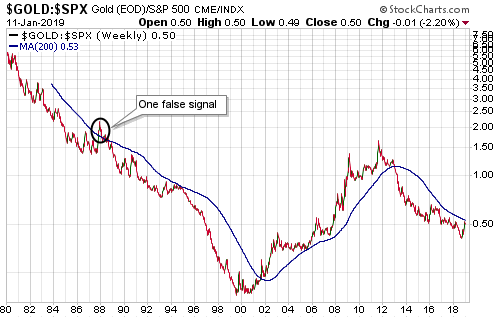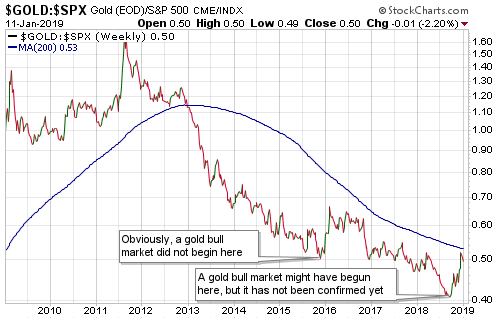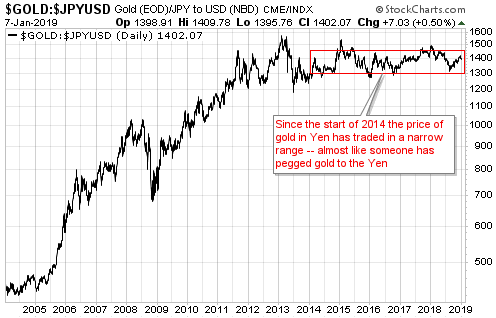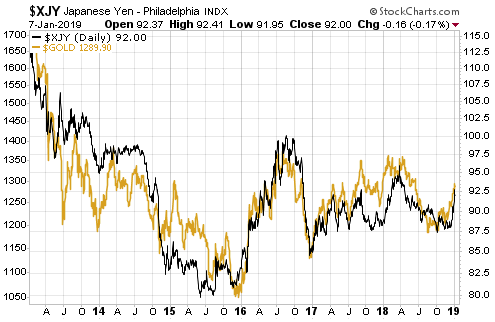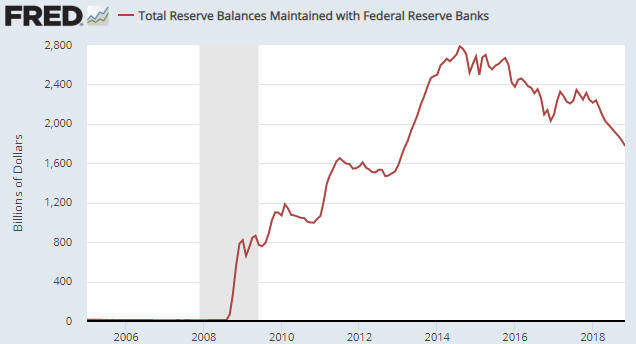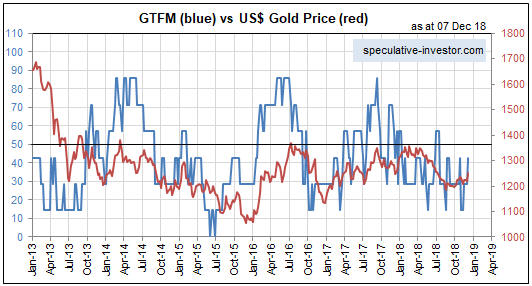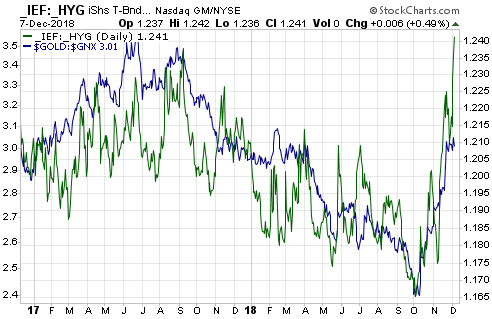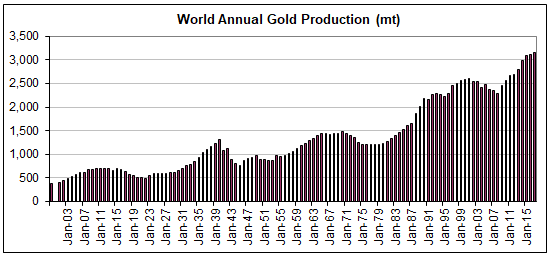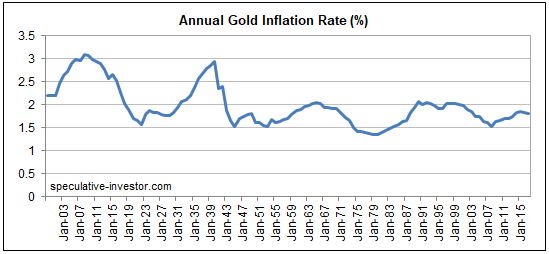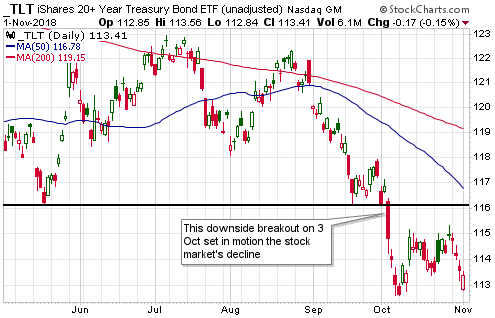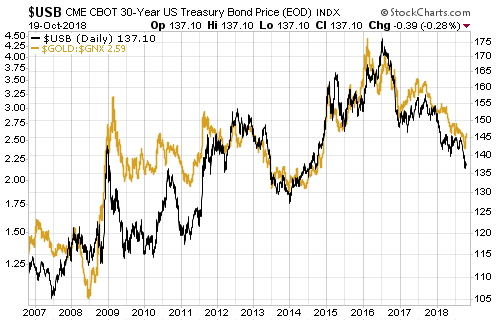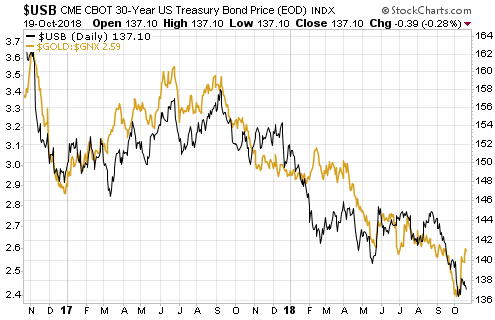[This blog post is an excerpt from a TSI commentary published about three weeks ago and covers a few general thoughts about what will happen in the financial world this year. Specific thoughts about what I expect this year from the stock, gold, bond, currency and commodity markets have also been included in TSI commentaries over the past three weeks.]
1) Early last year we predicted that the US stock market would experience greater-than-average volatility over the year ahead. This obviously happened, as there were more 2%+ single-day moves in the SPX during 2018 than in an average year.
We expect the same for this year, that is, we expect price volatility to remain elevated. The reason is that the two most likely scenarios involve abnormally-high price volatility. One of these scenarios is that a cyclical bear market began last October, and bear markets are characterised by periods of substantial weakness followed by rapid rebounds. The other scenario is that a very long-in-the-tooth cyclical bull market is about to embark on its final fling to the upside.
2) When attempting to predict when a period of economic growth will end it is futile to look more than 6-12 months into the future, because there are no leading recession indicators that can predict that far ahead with acceptable reliability. There are, however, leading indicators that can be used to determine the probability of a recession beginning within the next few quarters.
Early last year these indicators told us that a US recession would not begin during the first half of the year. They currently tell us that the US economy stands a good chance of commencing a recession this year, most likely during the second half of the year. Note, though, that if a recession does get underway this year it won’t become official until 2020, because recessions usually aren’t confirmed by the National Bureau of Economic Research until about 12 months after they start.
3) Regarding ‘cryptoassets’, at around this time last year we wrote:
“…it’s a good bet that the Bitcoin bubble reached its maximum level of inflation late last year. Also, the broader bubble in cryptoassets is set to burst during the first quarter of this year.”
And:
“By the end of 2018 it will be apparent that the public’s enthusiasm for Bitcoin and the “alt-coins” was one of history’s great speculative manias.”
This assessment looks correct.
We don’t have a strong opinion about what will happen to ‘cryptoassets’ in 2019. This is partly because there is no reasonable way to determine the fair value of these assets. For Bitcoin, for example, a price of $3,000 is no more or less sensible than a price of $30,000 or a price of $300.
Distributed ledgers can be very useful, but there should be ways to implement them without consuming a lot of resources. If so, the price of Bitcoin eventually will drop to almost zero.
A year ago we also predicted:
“Despite spectacular collapses in the prices of the popular ‘cryptoassets’ during 2018, central banks including the Fed and the ECB will firm-up plans to introduce their own blockchain-based currencies. This will be driven by a desire to eliminate physical cash, the thinking being that if there is no physical money it will be more difficult for the average person to make/receive unreported payments and escape a negative interest rate.”
As far as we know the major central banks didn’t firm-up plans to introduce their own blockchain-based currencies last year, but we continue to expect that they will — for the reasons mentioned above.
4) Regarding the Fed’s expected actions in 2018, early last year we wrote:
“Due to rising commodity prices it’s a good bet that “price inflation” will become a higher-profile issue during the first half of 2018, prompting the Fed to move ahead with its quantitative tightening (QT) and make two more rate hikes. However, both the QT and the rate-hiking will be put on hold during the second half of the year in reaction to increasing downside volatility in the stock market.”
We got the anticipated rate hikes during the first half and the increasing downside stock-market volatility during the second half of last year, but the Fed stuck to its guns. However, over the past three weeks the Fed Chairman has made it clear that the Fed will be quick to change direction if the stock market continues to decline and/or the economic numbers point to significant weakness.
For 2019 we expect one Fed rate hike, most likely in June. Also, we expect that people ‘in the know’ will explain to senior Fed members that it’s the balance-sheet reduction program (QT) that really counts, prompting the Fed to slow the pace of QT during the first half and conclude the QT program before year-end.
5) The ECB has just ended its QE program and has a tentative plan to implement its first rate hike during the third quarter of 2019. Given that nothing has been learned from the failed monetary experiments of the past few years, it’s a good bet that evidence of declining economic activity in the future will be met by the ramping-up or reintroduction of policies that failed in the past. Therefore, we predict that the ECB will not increase its targeted interest rates this year and will restart QE during the second half of the year.
6) This is not a prediction for 2019, but rather an observation that could apply for decades to come. We suspect that the age of real estate has ended.
We don’t mean that from now on it will be impossible to achieve good returns by investing in real estate, but that gone are the days when anyone could buy a house almost anywhere and likely end up with a sizable profit as long as they held for 10 years or more. From now on only astute investors will consistently make good returns from real estate, where “astute” means able to time the cyclical swings in the broad market or able to correctly anticipate future supply-demand imbalances in specific areas.
For the average person, residential property will transition from an investment to what it was prior to the 1970s: a consumer good (something bought solely for its use value).
The reason for the change is the interest-rate trend. The 3-4 decade downward trend in interest rates resulted in a 3-4 decade upward trend in housing affordability for buyers using debt-based leverage (that is, for the vast majority of buyers). There were corrections along the way, but provided that long-term interest rates continued to make lower lows there would eventually be a pool of new debt-financed buyers able to pay a much higher price.
There’s a good chance that the secular interest-rate trend reversed from down to up during 2016-2018. If so, future house buyers that don’t have good timing and/or substantial area-specific knowledge generally won’t make long-term capital gains on their residential property purchases.
 Print This Post
Print This Post

